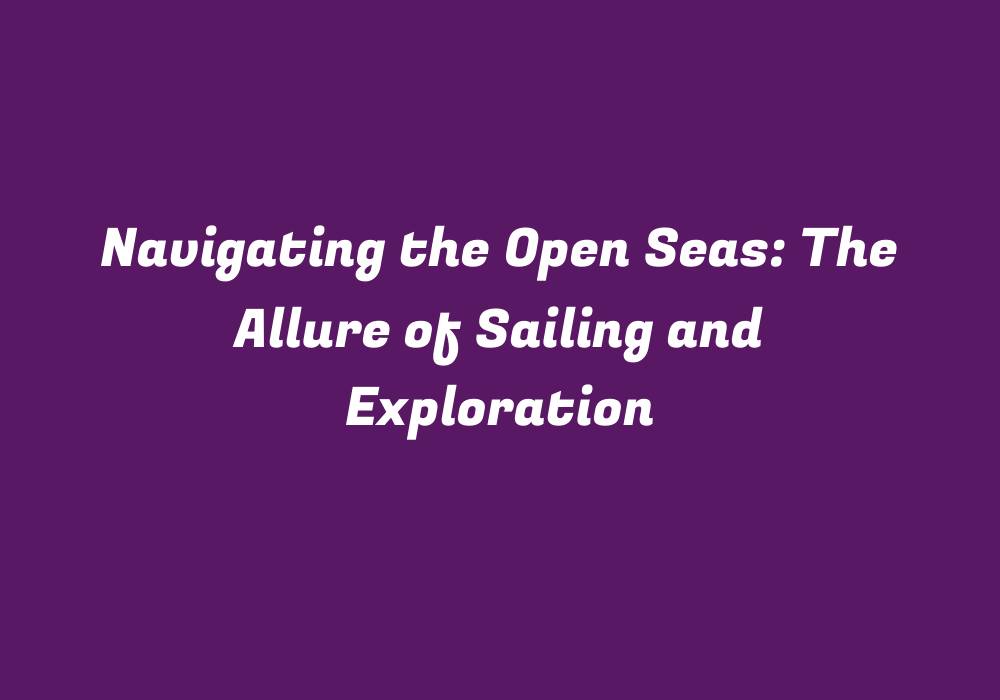Introduction
From the moment human beings ventured into the unknown depths of oceans, sailing and exploration became inextricably linked. The open seas presented a vast, mysterious, yet tantalizing world for adventurers to explore, navigate through, and understand. This article explores the captivating allure of sailing and exploration, tracing their evolution across centuries and their enduring influence on modern-day culture.
The Beginnings: Early Sailors and Navigators
Sailing emerged as a means of transportation for early civilizations, allowing people to expand their territories far beyond land borders. By the time Phoenicians took to the waters around 1500 BCE, they had mastered maritime navigation and trading, opening up new routes across the Mediterranean Sea. The Greeks later built on these foundations, expanding into the Aegean and Black Seas during the Classical era (c. 480-323 BCE).
As mariners ventured further afield, they encountered other civilizations and their technologies. For instance, Arab traders introduced Europeans to gunpowder, enabling the use of cannons in naval warfare. This technology later helped European explorers gain an edge over their Asian counterparts during the Age of Exploration (c. 1400-1800).
Exploration: From Discovery to Conquest
The era of exploration saw ambitious endeavors undertaken by intrepid sailors, who risked their lives for the pursuit of new lands and territories. Portugal and Spain took the lead in this quest, establishing trade routes to Asia and Africa through the Atlantic and Indian Oceans. In the process, they encountered new lands, cultures, and opportunities for conquest.
The Portuguese navigator Vasco da Gama became the first European to reach India by sea in 1498, opening a direct route between Europe and Asia. Christopher Columbus’s voyages from 1492 led him to believe he had reached Asia by sailing west, which ultimately resulted in his discovery of America. Both these achievements laid the foundation for Europe’s expansion into the New World and beyond.
Sailing: From Wooden Ships to Steel Navies
As exploration progressed, technological advancements were made in shipbuilding and naval warfare that profoundly impacted sailing capabilities. The introduction of sails, developed around 600 BCE, significantly improved the speed and maneuverability of wooden vessels. Later, during the Age of Sail (c. 1750-1850), iron-hulled ships and steam-powered propulsion systems revolutionized naval warfare and allowed for faster, larger, and more powerful vessels to dominate the open seas.
Throughout these changes in technology, sailing continued to be an essential component of maritime trade and military strategy. The British Royal Navy, for example, dominated the global stage during the 19th century thanks to its fleet of steam-powered warships, which outclassed those of its competitors.
Sailing in Modern Times
Although sailing has lost much of its significance as a primary mode of transportation, it remains an enduring passion for many enthusiasts around the world. Sailboats of various sizes and types continue to grace the waters, providing recreational opportunities, competitive challenges, and even serving as platforms for scientific research and environmental conservation efforts.
Sailing races like the Volvo Ocean Race and the America’s Cup remain popular spectator events, showcasing the skill and endurance required to navigate today’s modern sailing vessels across vast oceanic expanses.
Conclusion
The allure of sailing and exploration has been an essential part of human history for thousands of years. As technology continues to advance, our understanding of the world deepens, and our connection with the open seas remains a vital link between past and present. The pursuit of new horizons, both on land and at sea, will undoubtedly remain a captivating endeavor in the hearts and minds of future generations.
